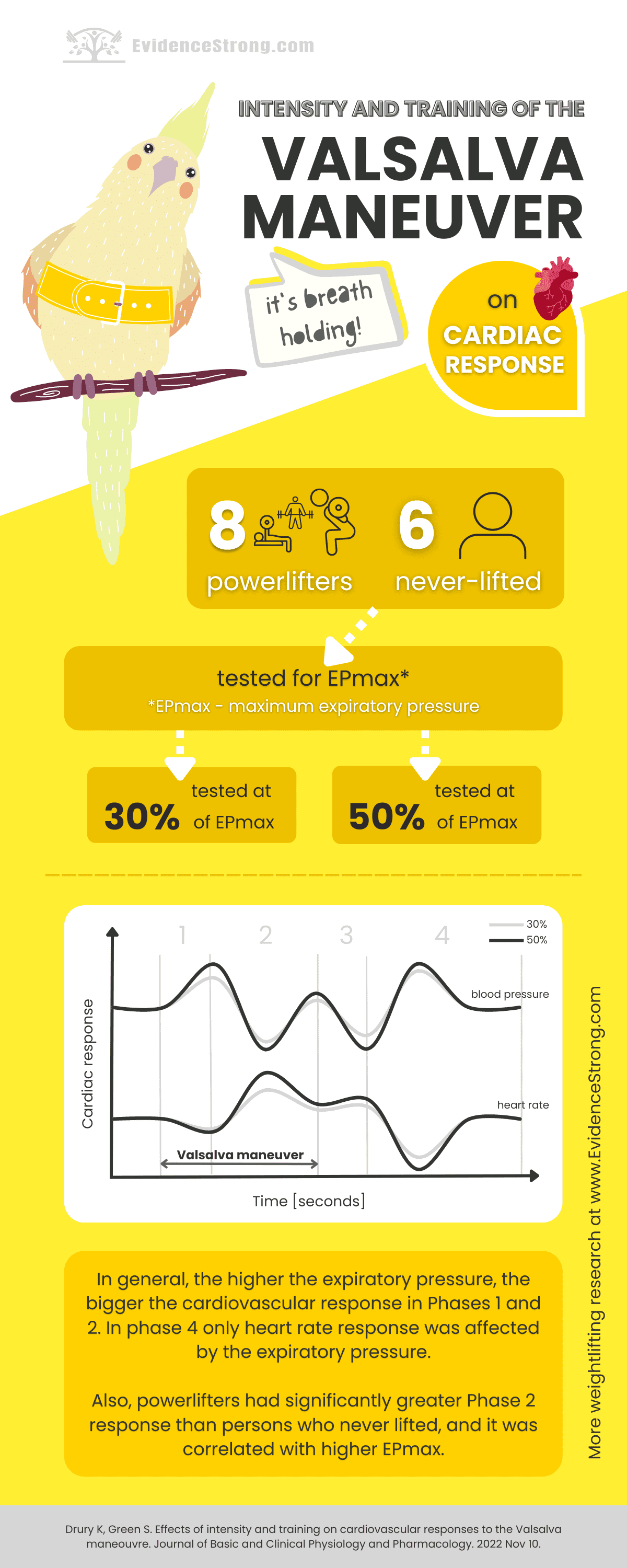Summary of an article analyzing the cardiovascular response to the Valsalva maneuver at different pressures, with training or not.
Who
8 powerlifters (3 females, 5 males) and 6 participants who never lifted (3 females, 3 males) (Australia).
Design
Experimental study:
- familiarization session - learning the procedure and testing EPmax - maximal expiratory pressure
- main experiment session - perform repeated Valsalva maneuver (breath holding) at 30% of EPmax and 50% of EPmax
Outcome measures/tests
- heart rate, systolic blood pressure, diastolic blood pressure, pulse pressure
Main results
- expiratory pressure during the Valsalva maneuver was higher at 50% of EPmax than at 30% of EPmax.
- expiratory pressure was higher in powerlifters than participants who did not lift (at both 30% and 50% of EPmax)
- Valsalva maneuver is considered in 4 phases: phases 1 and 2 include breath holding, phases 3 and 4 are after return to breathing
- Intensity (30% or 50% of EPmax) had an effect on systolic and diastolic blood pressure and heart rate but pulse pressure was not.
- powerlifters had a higher cardiac response in Phase 2 for heart rate and blood pressure
Take home message
For a clinician & coach
In general, the higher the expiratory pressure, the bigger the cardiovascular response in Phases 1 and 2 (when holding breath). In phase 4 only heart rate response was affected by the expiratory pressure. Also, powerlifters had significantly greater Phase 2 response than persons who never lifted, and it was correlated with higher EPmax.
For a parent
The higher the expiratory pressure, the bigger the cardiovascular response. Also, powerlifters had significantly greater early response (when holding breath) than persons who never lifted, and it was correlated with higher EPmax.
For an athlete
The higher the expiratory pressure, the bigger the cardiovascular response. Also, powerlifters had significantly greater early response (when holding breath) than persons who never lifted, and it was correlated with higher EPmax.
Original article
Drury K, Green S. Effects of intensity and training on cardiovascular responses to the Valsalva maneuver. Journal of Basic and Clinical Physiology and Pharmacology. 2022 Nov 10.
You might want to read next
Olympic weightlifters have different muscles
Stable and variable components of the lifts in Olympic weightlifting
